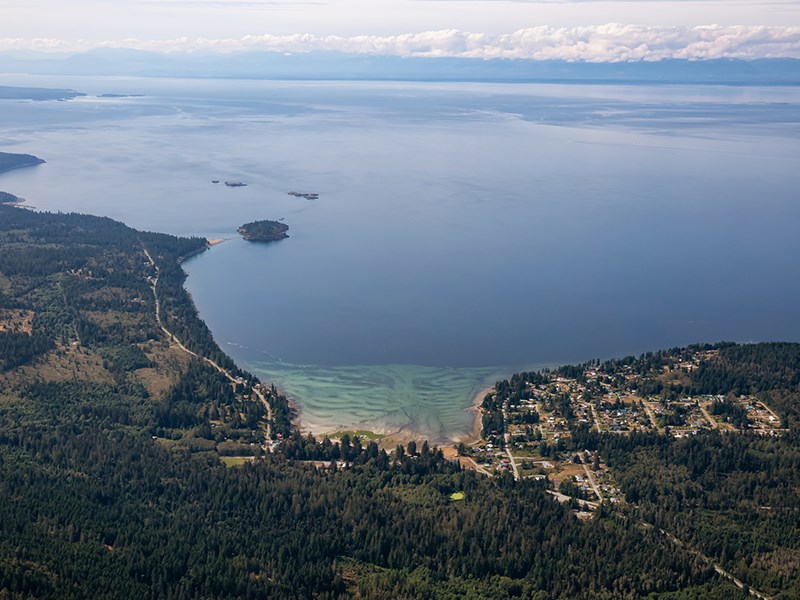Gillies Bay Internet Society (GBIS) wants to tie into a Telus fibre-optic cable to provide secure internet service to households in the area.
At the July 16 qathet Regional District (qRD) committee of the whole meeting, correspondence from Barb Egglestone, president of Texada Island Health Services Society, was reviewed. In it, Egglestone stated that GBIS currently gets its internet service via the Sunshine Coast Health Centre south of Powell River. The signal, she stated, is sent via an eight-kilometre microwave link to Mount Pocahontas on Texada Island.
“All of their services originate through that link, and as you can appreciate, it is the weakest link in their system and is subject to various forms of interference,” stated Egglestone.
She stated that the Telus fibre cable to Texada Health Centre has sufficient capacity to service GBIS. The health service society recommends that the regional district board approve the GBIS request to allow installation of a cabinet for the equipment in the Texada Health Centre, as long as it meets criteria set out by Dr. Kevin Black, the facility’s physician.
Electoral Area D director Sandy McCormick said Gillies Bay Internet Society would take care of the installation at no cost to the regional district.
Chief administrative officer Al Radke said Texada Health Centre is the regional district’s building.
Radke said staff had been working on this case with Texada Island proponents and he had a recommendation that should provide clarity. He said staff recommends that the committee recommend the board approve the install of internet service provider infrastructure inside Texada Health Centre. This will allow tapping into the Telus fibre-optic cable in order to provide an improved and secure service for customers, on the condition that the wishes of the tenant, Dr. Black, are respected, and that all installations are carried out by a certified electrician.
The committee passed a motion to that effect.
In an interview, Telus field operations manager for the Sunshine Coast Kris Klammer said he thinks there is a bit of a misunderstanding. He said the information refers to a fibre-optic connection in the doctor’s office.
“While it may appear that there is one, the fibre runs up and connects to the radio system,” said Klammer. “There is no separate fibre system to connect to and the only connection point to Texada Island is the microwave.”
This means there is no fibre-optic connection to Texada Island.
“What would be required to run fibre to the island is a submarine cable that physically travelled from Powell River over to Texada,” said Klammer.
He said Telus used fibre to connect to the microwave system because it was the cheaper, more robust system to transport the signal to the office.
“We wouldn’t want the public to think we’d run a fibre line to Texada Island and not given people access to it, because that is not correct,” said Klammer. “It doesn’t exist.”
Brian Seymour, chair of the GBIS, said in an interview that it has about 230 clients around Gillies Bay and all are served from the Sunshine Coast Health Centre.
He said GBIS is pursuing several different options to improve internet service in the community.
“We’ve had no help from the regional district so we’ve reached out ourselves,” said Seymour. “One of our options was to change our point of presence from Sunshine Coast Health Centre to the Texada Health Centre. It’s still not ideal and probably won’t happen for a variety of reasons, but we had to go through the motions and get permission just in case.”
Seymour said GBIS has been trying for several years to improve service and it has been very frustrating trying to do it, for many reasons.
He said for rural broadband internet, Strathcona Regional District has done a tremendous amount and qRD has “done nothing.”
Seymour said everybody in GBIS pays for how much they use under the current system. He said connection to the mainland is 200 megabits per second but if many users are on the system, the shared bandwidth slows considerably.
“People who don’t live in rural areas just don’t understand these things,” said Seymour. “My guess is that the people in the regional district offices don’t understand.”
Connection to the service is line-of-sight to the tower, so if there is any obstruction, internet service is not possible.
“It’s a very complicated system,” said Seymour, “so improving it is complicated as well.”



